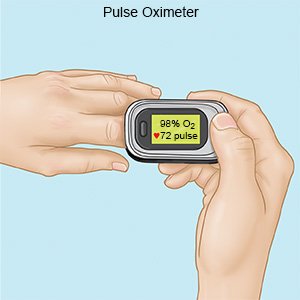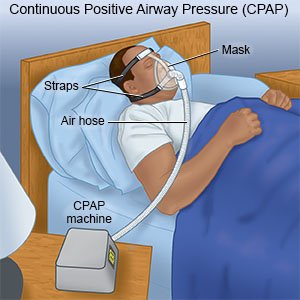Chronic Respiratory Failure
Medically reviewed by Drugs.com. Last updated on Aug 4, 2025.
Chronic respiratory failure (CRF) is a long-term condition that happens when your lungs cannot get enough oxygen into your blood. CRF can also happen when your lungs cannot get the carbon dioxide out of your blood. A buildup of carbon dioxide in your blood can cause damage to your organs. The decrease in oxygen and the buildup of carbon dioxide can happen at the same time. CRF may develop over a period of days to years.
 |
WHILE YOU ARE HERE:
Informed consent
is a legal document that explains the tests, treatments, or procedures that you may need. Informed consent means you understand what will be done and can make decisions about what you want. You give your permission when you sign the consent form. You can have someone sign this form for you if you are not able to sign it. You have the right to understand your medical care in words you know. Before you sign the consent form, understand the risks and benefits of what will be done. Make sure all your questions are answered.
You may need extra oxygen
if your blood oxygen level is lower than it should be. You may get oxygen through a mask placed over your nose and mouth or through small tubes placed in your nostrils. Ask your healthcare provider before you take off the mask or oxygen tubing.
You may need medicines
to open your airways. You may also need medicines to decrease swelling and spasms in your lungs. You may need medicines to decrease the amount of fluid in your body. You may need medicines to prevent or treat an infection.
Tests:
- Arterial blood gas (ABG) test measures the amount of oxygen and carbon dioxide in your blood. An ABG test also measures the pH of your blood and the amount of bicarbonate in it.
- Pulse oximetry will show the decrease in blood oxygen without having to draw blood.

Treatment:
- An incentive spirometer helps you take slow, deep breaths to expand and fill your lungs with air.
- Chest physiotherapy (CPT) helps loosen mucus. During CPT, a healthcare provider lightly claps on your back and chest with his or her hands. This brings up the mucus from your lungs and makes it easier to cough it up.
- Suction may be used to help remove secretions that you are not able to cough up.
- Ventilation helps get oxygen into your lungs and carbon dioxide out. Ventilation also makes the work of breathing easier. Some systems, such as a CPAP or BiPAP, may only be needed while you sleep. A mechanical ventilator may be needed some or all of the time. It is attached to a mask or breathing tube.

RISKS:
CRF can cause you to have an abnormal heart rhythm. CRF can also lead to a coma. CRF can cause damage to your blood vessels and cause your heart to fail. CRF can be life-threatening.
CARE AGREEMENT:
You have the right to help plan your care. Learn about your health condition and how it may be treated. Discuss treatment options with your healthcare providers to decide what care you want to receive. You always have the right to refuse treatment.© Copyright Merative 2025 Information is for End User's use only and may not be sold, redistributed or otherwise used for commercial purposes.
The above information is an educational aid only. It is not intended as medical advice for individual conditions or treatments. Talk to your doctor, nurse or pharmacist before following any medical regimen to see if it is safe and effective for you.
Learn more about Chronic Respiratory Failure
Treatment options
Care guides
Further information
Always consult your healthcare provider to ensure the information displayed on this page applies to your personal circumstances.
